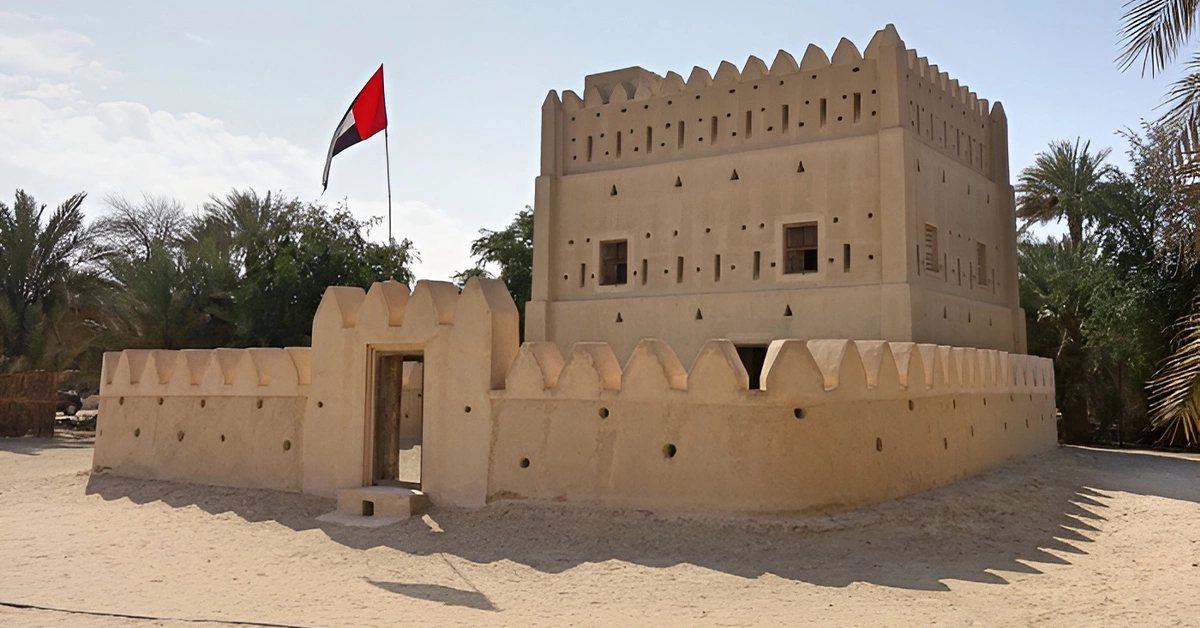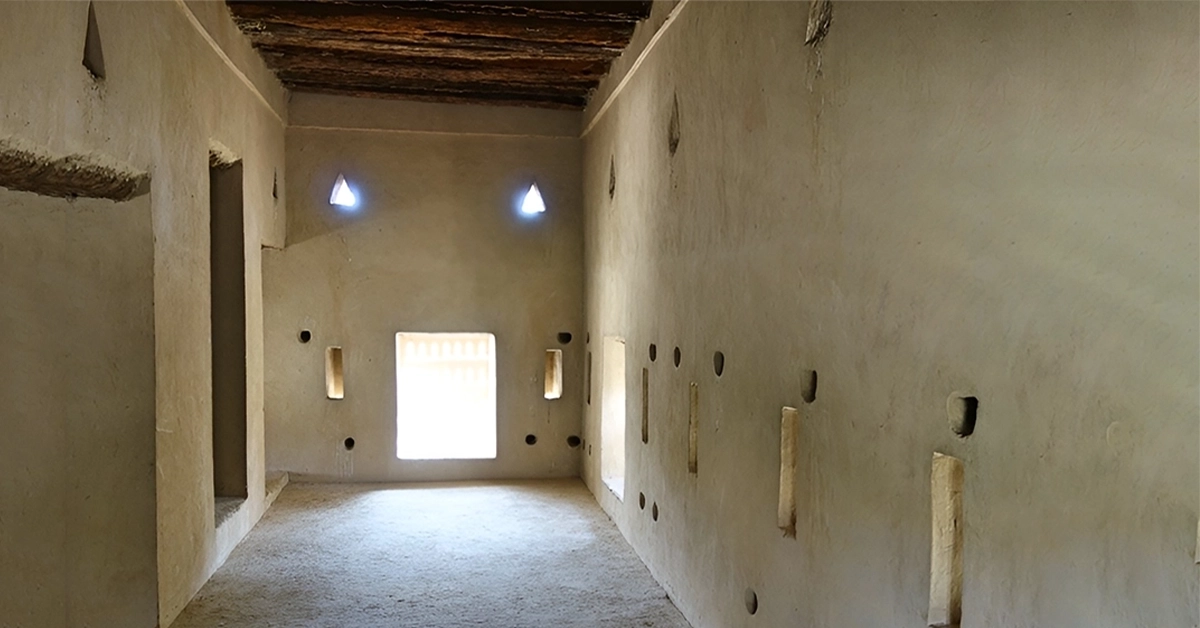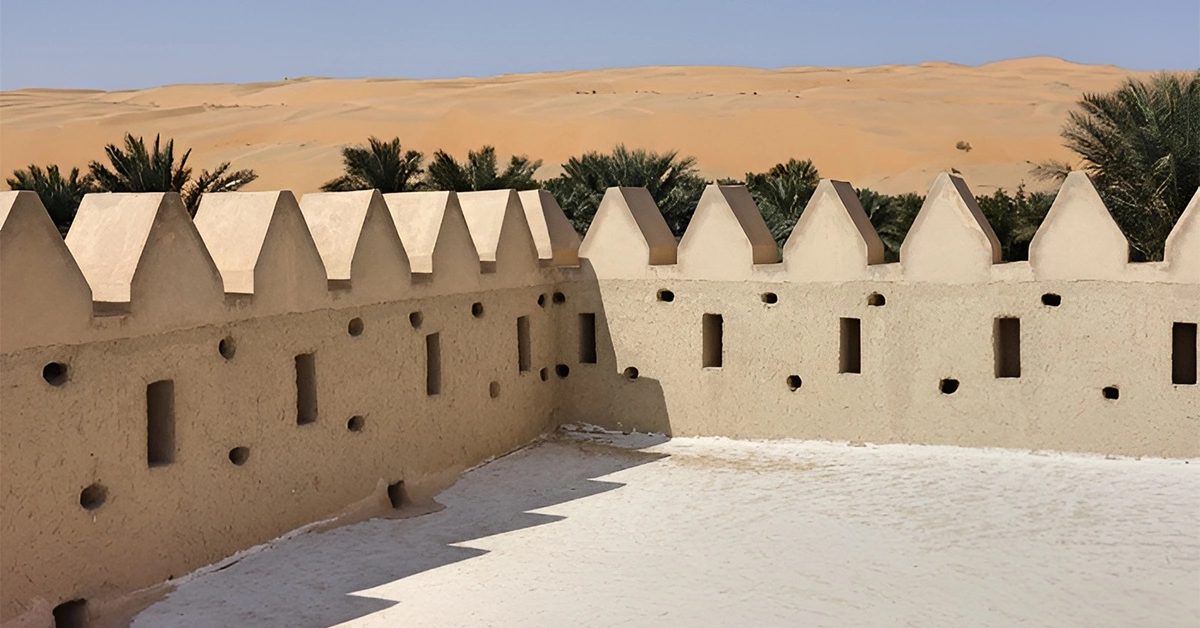Dhafeer Fort is a window into the past, offering a glimpse of life in the Liwa region long ago. If you enjoy exploring history, culture, or iconic landmarks, a visit to this fort should be on your list. Its traditional architecture, sturdy mud-brick walls and elevated position make it a fascinating site to wander through and admire.
In this guide, you’ll find everything you need to plan your visit, from its location and timings to the key features that make it special. You’ll also gain insight into its rich history, the surrounding desert landscape and the unique experiences it offers.
- Location
- How to Get There
- History of Dhafeer Fort
- Things to do at Dhafeer Fort
- Timings
- Parking
- Key Takeaways
- FAQs
Location
Dhafeer Fort is located in Mzeerʻah, Mahdar Kayyah, on the eastern side of the Liwa crescent, within Liwa Oasis. It was likely built as a fortified house for the Al Hamily family. “For precise directions without any detours, refer to the map below.
How to Get There
You can reach the destination by driving, which gives you the flexibility to travel at your own pace, or by using public transport for a more convenient and budget-friendly option.
By Car
Dhafeer Fort sits in the Liwa region of the Abu Dhabi Emirate. You can reach it from the capital via two main driving routes: the Eastern Route (E65), a two-lane road that is scenic but slightly slower, or the Western Route (E45), a faster highway option with more service stations along the way.
By Bus
You can reach Dhafeer Fort using public transport by first taking a bus from Abu Dhabi Central Bus Station to Madinat Zayed, the closest major town to the fort. From Madinat Zayed, it’s a 39-minute drive to the fort.
By Taxi
For a straightforward journey, you can take a taxi from anywhere in the Western Region straight to your destination. The fare will depend on how far you’re travelling and your exact starting point.
History of Dhafeer Fort
Dhafeer Fort is in the settlement of Dhafeer, on the old travel routes through the Liwa Crescent. It was built in 1915 by the Bani Yas tribe during the rule of Sheikh Hamdan bin Zayed bin Khalifa.
At that time, the Liwa desert was quiet and sparsely populated, with small groups of nomads moving through. In the 1950s, the settlement had about twelve arish houses made from palm fronds and beams, so a strong building like the fort stood out.
The fort was first used as a watchtower with a walled enclosure where animals could be kept safe during attacks. Unlike most watchtowers in Liwa, which were round, Dhafeer was a rectangular, two-storey building known locally as a murabba.
By the 1950s, it had fallen into disrepair, but it was rebuilt in 1996 using mudbrick to keep its historic look while marking it as a later construction.

Things to do at Dhafeer Fort
The best things to do in Abu Dhabi include visiting landmarks such as Dhafeer Fort. Here, you can explore its historic interiors and take in the atmosphere of this iconic site.
1. Explore the Fort’s Interior
Dhafeer Fort is built from traditional mud bricks, with thick walls designed to keep the interior cool in the desert heat. Counted among the hidden gems in Abu Dhabi, it offers a chance to wander through small, narrow rooms, admire wooden beams made from palm trunks and climb to the upper level for a better view.

2. Admire the View of the Sand Dunes
Climb to the roof for stunning views of the surrounding desert landscape. The fort’s elevated position provides a perfect vantage point to appreciate the vastness of the Liwa desert.

3. Rattan Cafe
You will also discover Rattan Café during your visit to Dhafeer Fort. Whether with family, exploring solo, or simply passing by, it’s a cosy desert retreat where you can sip your coffee and watch the golden dunes stretch out beneath the endless sky.
4. Capture Stunning Shots
If you love history and art, Dhafeer Fort is a place you’ll want to capture. Its impressive mud-brick walls against the endless desert dunes create picture-perfect moments you won’t want to miss.
Timings
Dhafeer Fort is open to visitors at any time and does not have set opening hours. You can explore it whenever you like, but it’s best to visit during daylight for safety and to enjoy the desert views.
Best times to visit
- Morning (8:00 AM – 11:00 AM): Cooler and better light for photos.
- Late afternoon (4:00 PM – 6:00 PM): The golden light makes the fort and desert look beautiful.
Parking
Dhafeer Fort provides free self-parking for visitors, making it easy to stop by whether you’re exploring the fort or enjoying the nearby desert landscape.
Key Takeaways
Dhafeer Fort in Liwa Oasis is a historic landmark built in 1915, showcasing traditional mud-brick architecture and offering a glimpse into Abu Dhabi’s past. Visitors can wander its restored interiors, admire wooden beams made from palm trunks and climb to the rooftop for sweeping desert views.
Open year-round and free to visit, the fort is accessible by car, bus, or taxi. Drivers can follow the E45 or E65 highways straight into Liwa, with the road framed by miles of golden dunes. A must-visit for history lovers, photographers and those seeking Abu Dhabi’s hidden gems.
FAQs
Winter is the ideal season to explore Dhafeer Fort. In warmer months, mornings and evenings are the best times to avoid the midday heat and still take in the views.
No, visiting Dhafeer Fort is free of charge. You can explore the fort and its surroundings without a ticket or fee.
Dhafeer Fort was initially built in 1915 by the Bani Yas tribe during the rule of Sheikh Hamdan bin Zayed bin Khalifa.
Dhafeer Fort offers a fascinating glimpse into Abu Dhabi’s history, with its historic architecture, desert views and unique atmosphere making it a must-visit for history enthusiasts and travellers alike.
If you’re keen to explore more of Abu Dhabi’s rich heritage, don’t miss our guide to Qasr Al Hosn. It could be the perfect stop on your next visit.